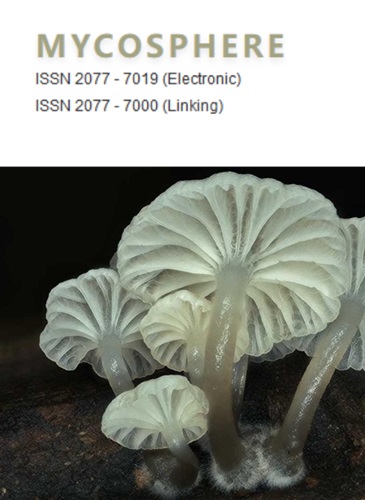The relevance of fungi in astrobiology research – Astromycology
IF 15.1
1区 生物学
Q1 MYCOLOGY
引用次数: 2
Abstract
Since the very first steps of space exploration, fungi have been recorded as contaminants, hitchhikers, or as part of missions’ crews and payloads. Because fungi can cause human disease and are highly active decomposers, their presence in a space-linked context has been a source of major concern given their possible detrimental effects on crews and space structures. However, fungi can also be beneficial and be used for many space applications. The exact effects on fungi are not always clear as they possess high adaptability and plasticity, and their phenotypes and genotypes can undergo several changes under the extreme conditions found in space, thus leading to different results than those we would have on Earth. Understanding and analysing these aspects is the subject of astromycology, a research field within astrobiology. Mycosphere 14(1): 1190–1253 (2023) www.mycosphere.org ISSN 2077 7019真菌在天体生物学研究中的相关性——天体真菌学
本文章由计算机程序翻译,如有差异,请以英文原文为准。
求助全文
约1分钟内获得全文
求助全文
来源期刊

Mycosphere
MYCOLOGY-
CiteScore
30.00
自引率
8.20%
发文量
9
审稿时长
4 weeks
期刊介绍:
Mycosphere stands as an international, peer-reviewed journal committed to the rapid dissemination of high-quality papers on fungal biology. Embracing an open-access approach, Mycosphere serves as a dedicated platform for the mycology community, ensuring swift publication of their valuable contributions. All submitted manuscripts undergo a thorough peer-review process before acceptance, with authors retaining copyright.
Key highlights of Mycosphere's publication include:
- Peer-reviewed manuscripts and monographs
- Open access, fostering accessibility and dissemination of knowledge
- Swift turnaround, facilitating timely sharing of research findings
- For information regarding open access charges, refer to the instructions for authors
- Special volumes, offering a platform for thematic collections and focused contributions.
Mycosphere is dedicated to promoting the accessibility and advancement of fungal biology through its inclusive and efficient publishing process.
 求助内容:
求助内容: 应助结果提醒方式:
应助结果提醒方式:


